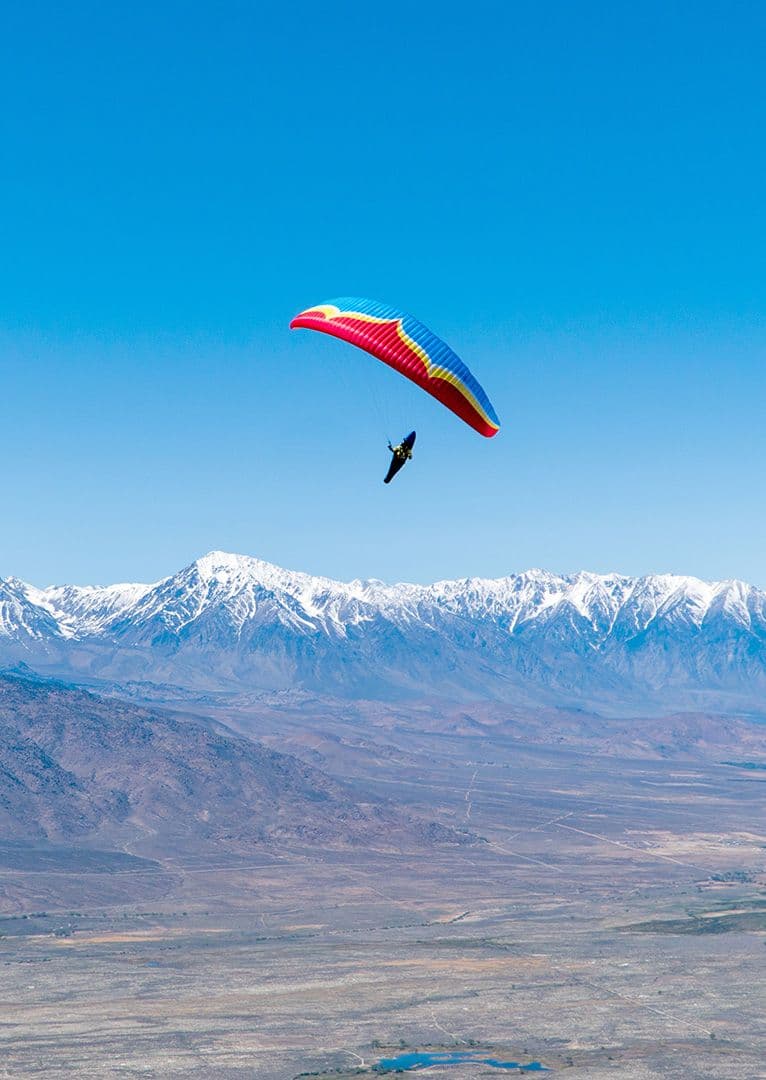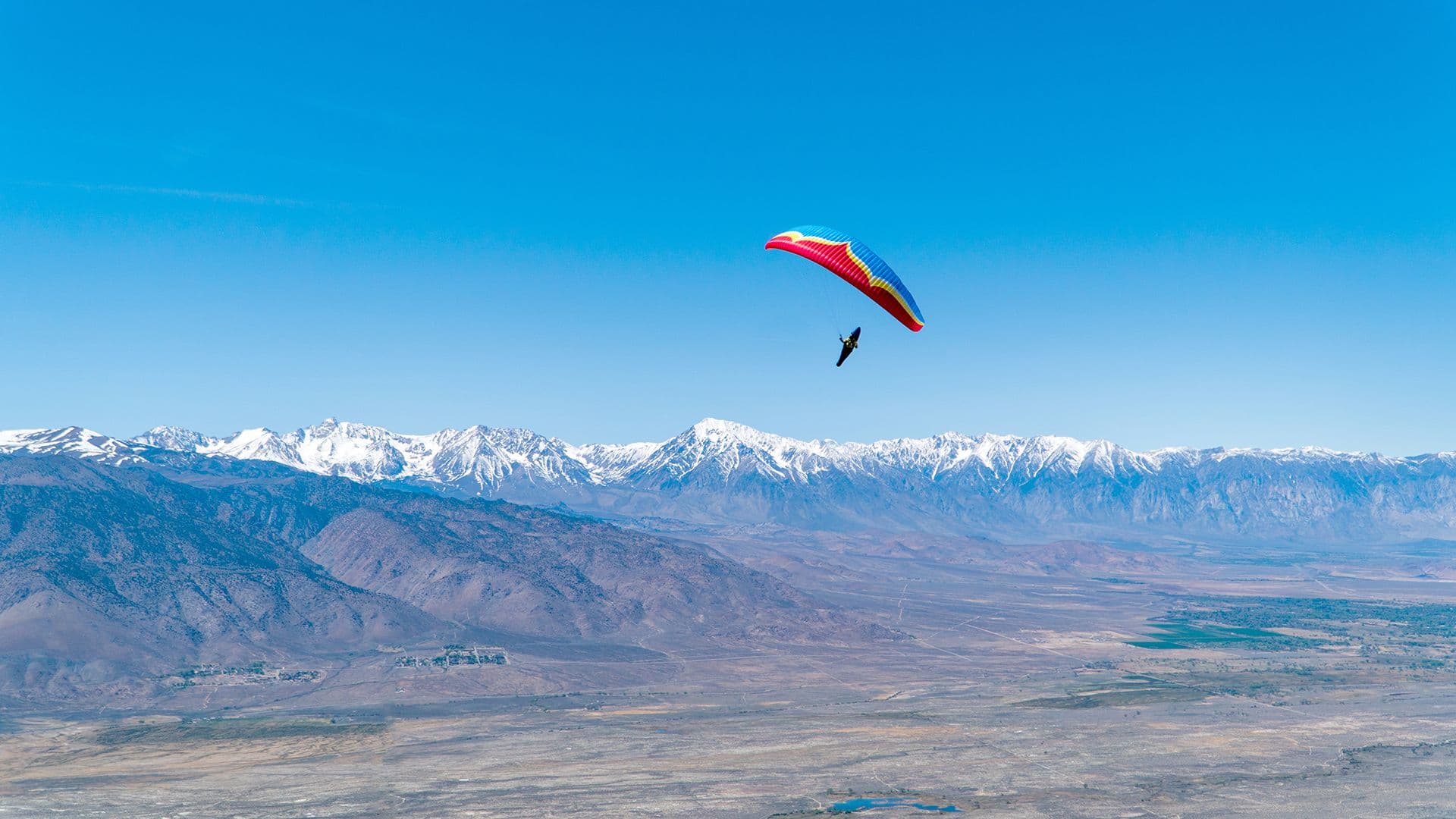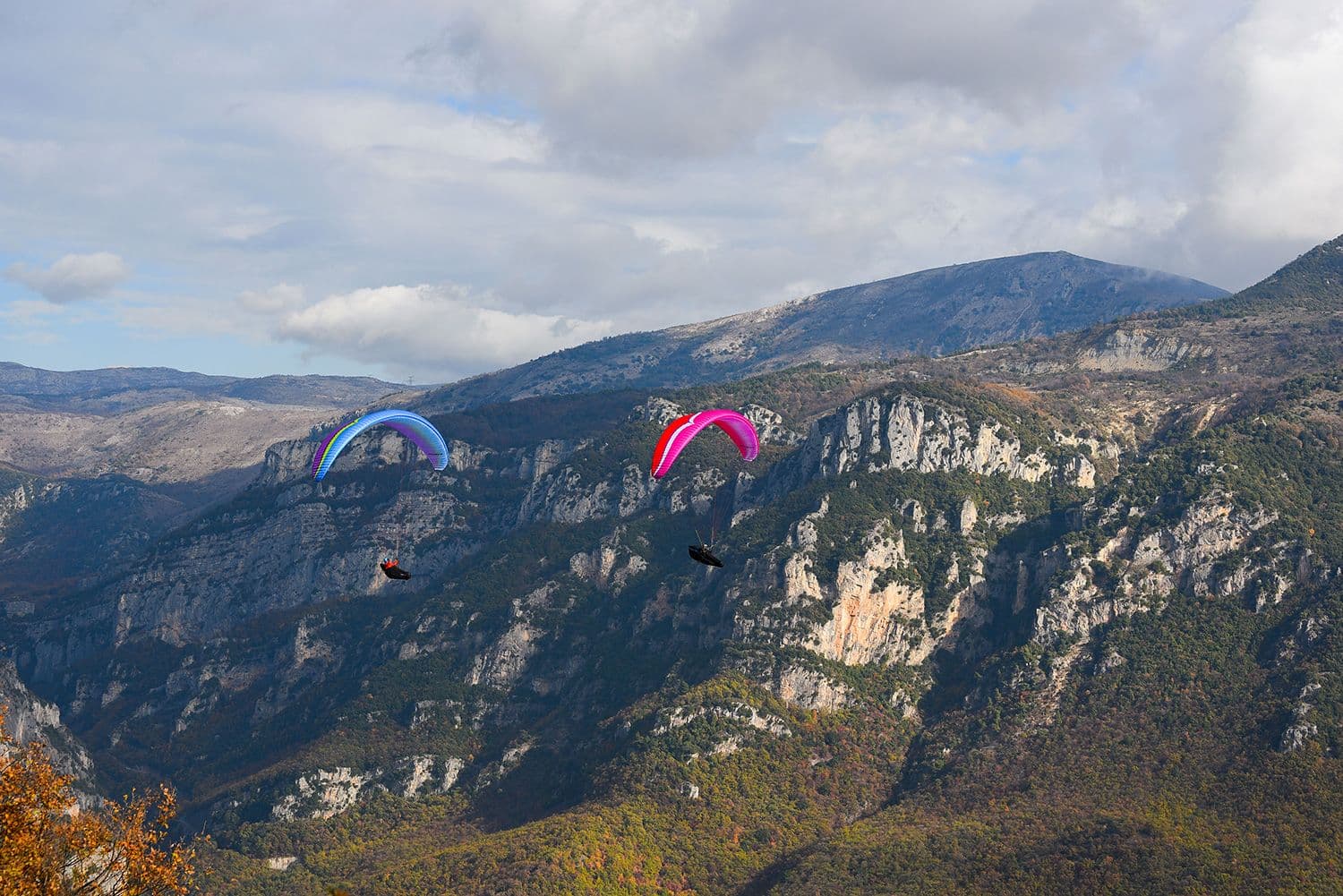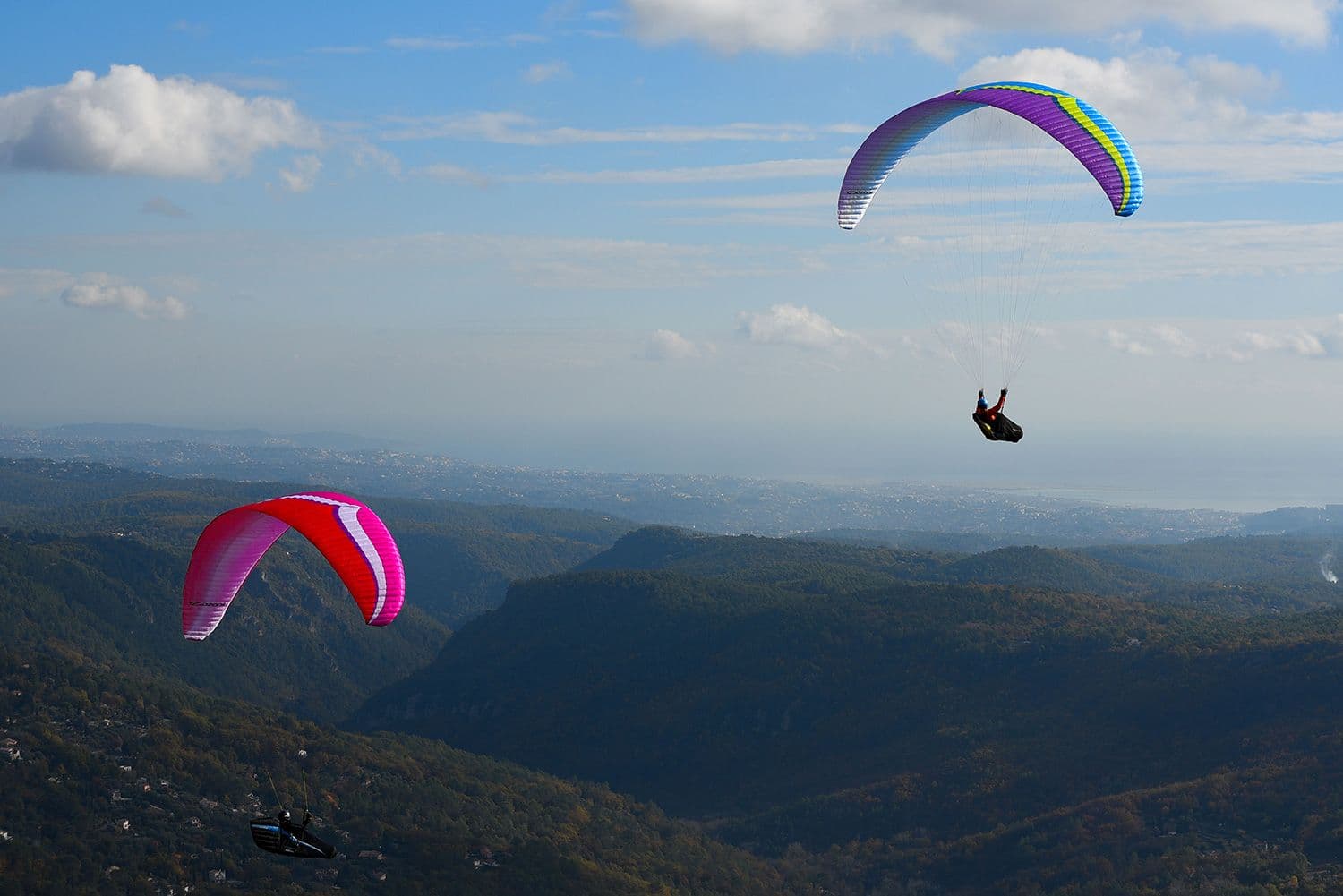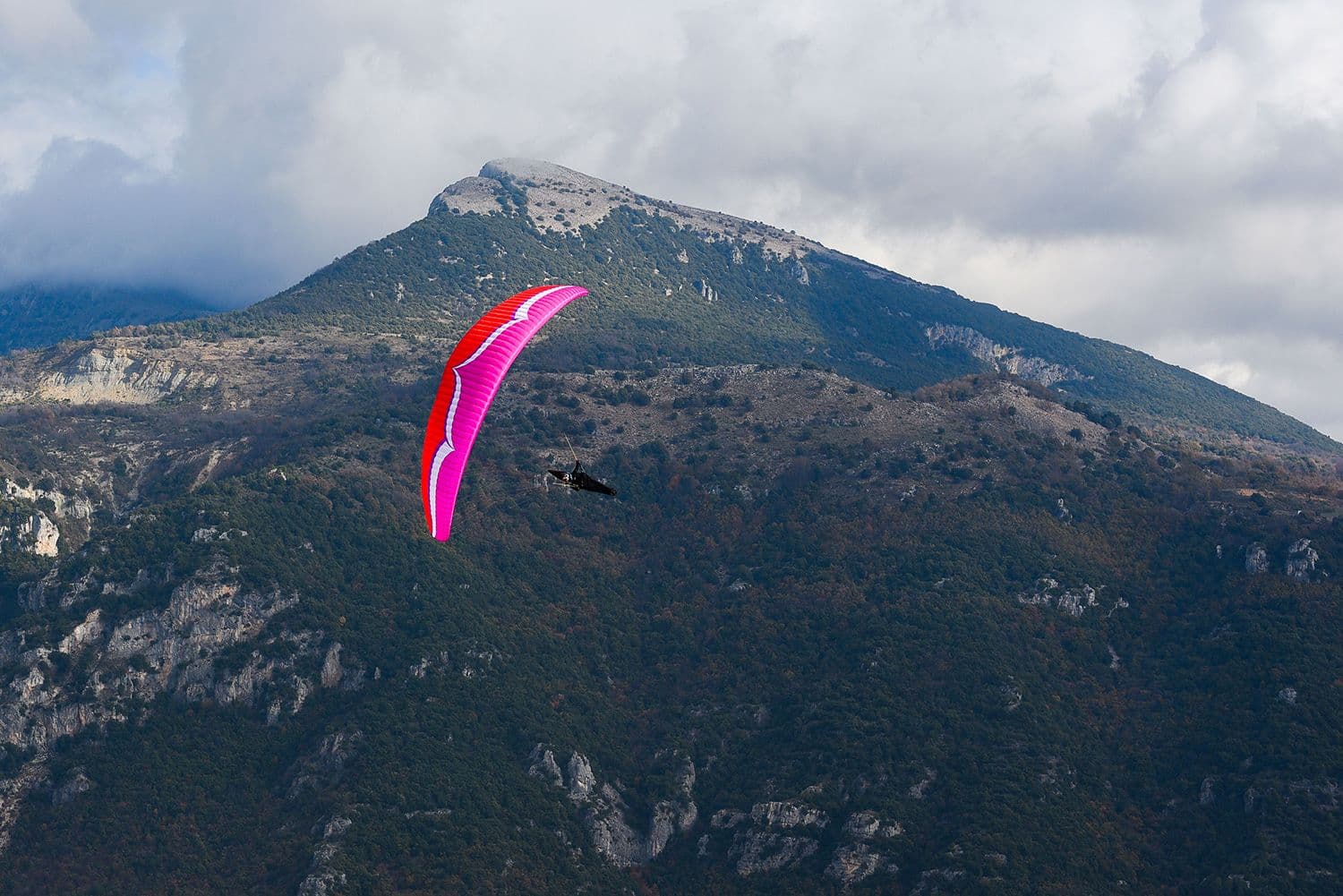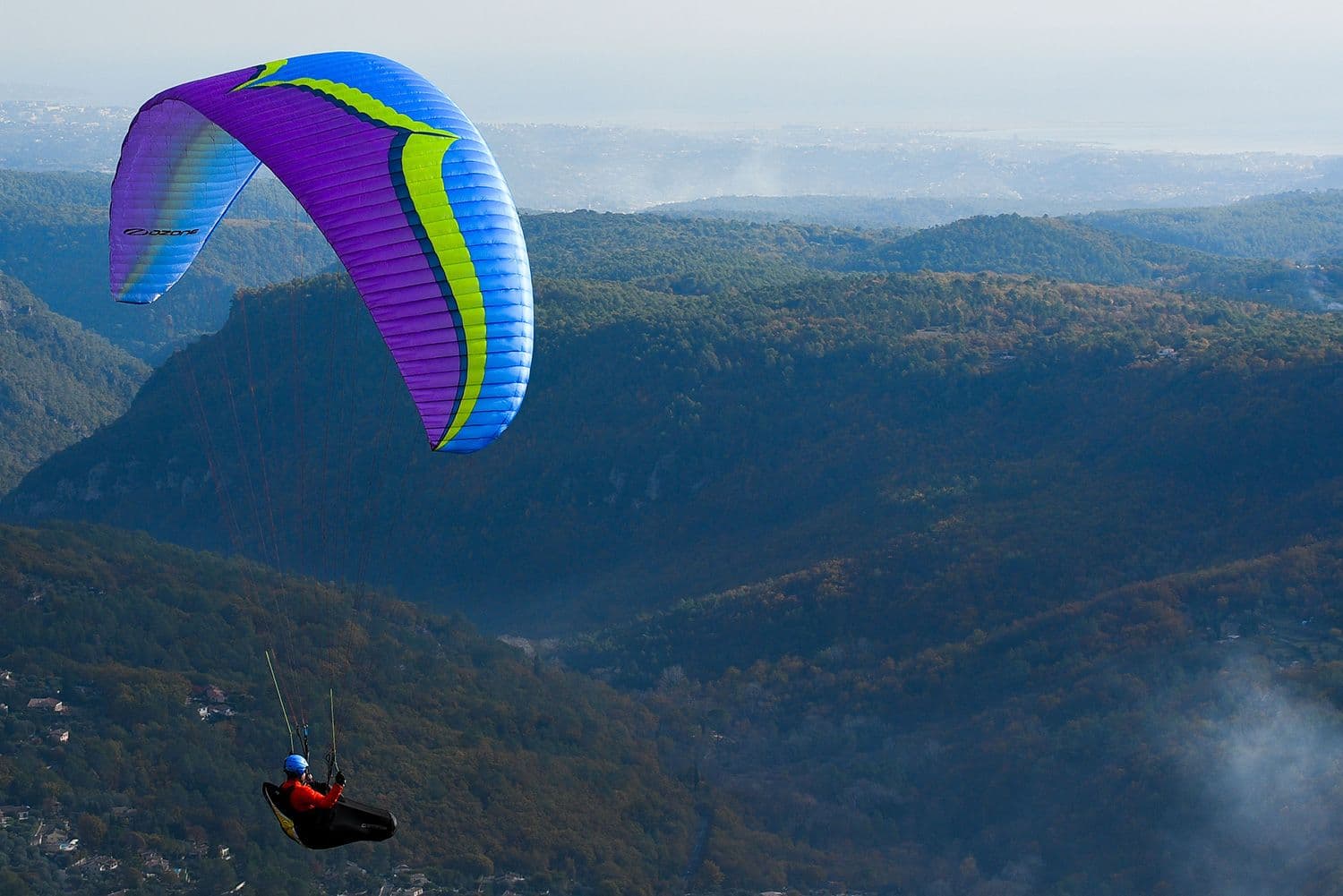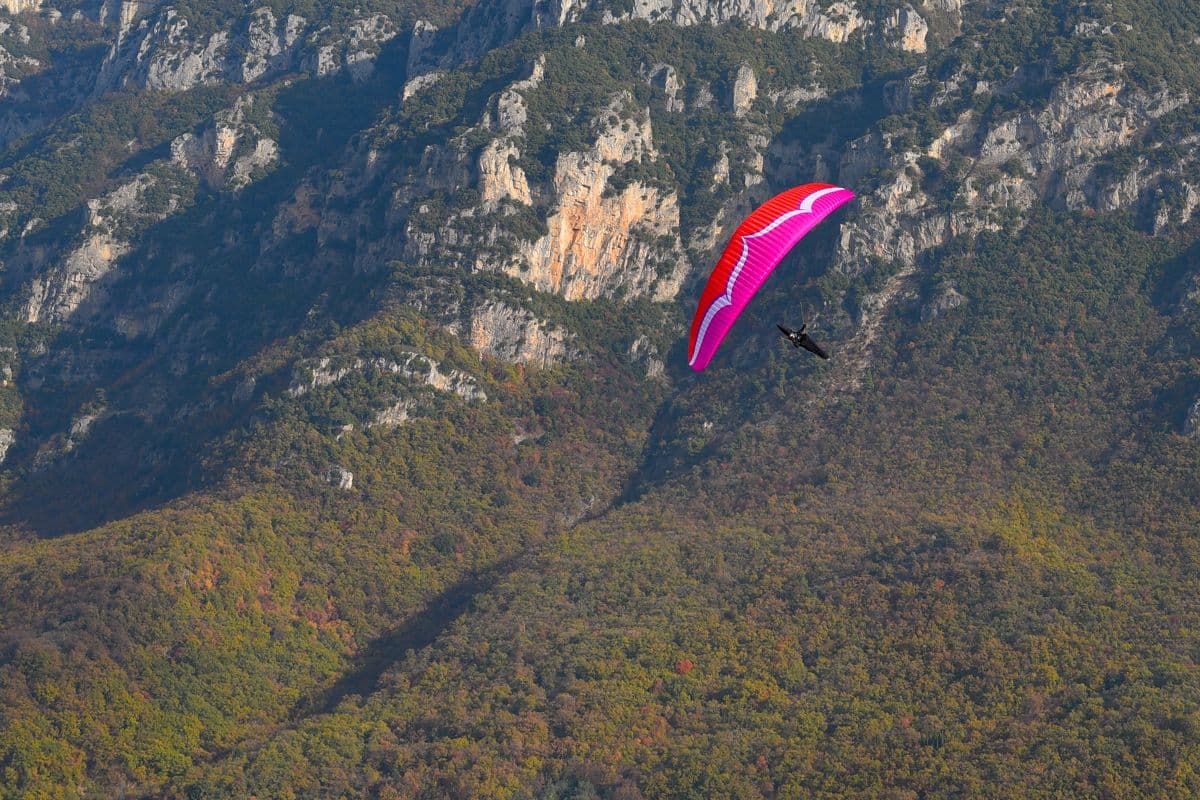DESIGNER’s NOTES:
- 1kg lighter than the Delta 3
- Same moderate Aspect Ratio
- Higher top speed than Alpina 2
- Optimized construction: 4 more cells, yet lighter than the A2
- Increased speed / glide performance in trim and accelerated flight
- Improved handling and precision in the turn
- Low pack volume, perfect for Hike and fly XC adventures
- Double 3D shaping, patented OZONE SharkNose, and line drag reductions
ACTIVE C RISER CONTROL
When gliding at trim or in accelerated flight it is possible to pilot with the C risers. This gives an improved feel and control over the wing, enabling you to fly actively without using the brakes (which cause drag and pitch movements). The direct feel allows you to stop collapses before they happen and maintain higher speeds and higher levels of efficiency through turbulence.
To fly with the C risers, keep hold of your brake handles (remove any wraps) and take hold of the handles located at the top of the C risers, or just the C risers themselves. With the C risers you can fly actively through turbulence; If you feel the nose of the wing lose internal pressure you can apply pressure to the C’s to keep it open. The amount of pressure and size of the input is dependent upon the amount of turbulence, but always be gentle at first to learn the feel of the movement and to avoid large pitch oscillations.
The Alpina 3 is inherently stable at full speed. C riser control is very effective up to about ¾ speed, however during the last few cms of speed bar travel C riser control on its own becomes less effective. When flying faster than ¾ speed, we recommend to control the pitch of the wing actively using a combination of the speed bar and C riser input. If you feel the nose of the wing start to collapse the first action should be to release the speed bar slightly – but impulsively – and then make any necessary C riser input, always action with the speed bar first before making any C inputs. Using the combined active speed bar/C riser control technique you will be able to maximise your speed and efficiency whilst minimising the likelihood of collapses.
NOTE: Active C riser control is suitable for gliding in good ‘normal’ air without serious turbulence, it does not replace proper active flying using the brakes in strong turbulent conditions. If you are unsure about the air, return the glider to trim speed, release the C risers, and fly the glider actively with the brakes.



